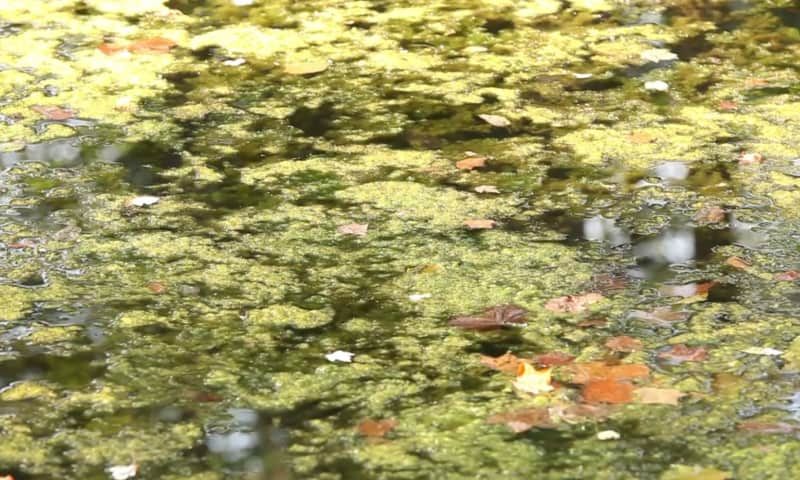Keep Hunting Dogs Safe: Avoid Harmful Blue-green Algae
OutdoorHub Reporters 09.30.13

Waterfowlers in Kansas and other parts of the nation are being warned again of the dangers posed by blue-green algae, or cyanobacteria. Commonly called “pond scum,” blue-green algae can have a number of detrimental effects on hunting dogs that come into contact with the bacteria. According to the Kansas Department of Wildlife, Parks and Tourism, algae bloom can cause serious illness or even death in dogs.
Blue-green algae can be found commonly across the globe and in nearly every type of environment. Cyanobacteria require only the barest of necessities to survive and as such, have been discovered even under desert rocks and in the frigid temperatures of the Antarctic. With an appropriately high level of nutrition in water and beneficial lighting, blue-green bacteria enter a rapid reproduction phase known as a bloom. While not all blooms are harmful—or even visible—some blooms may contain chemicals that prove to be toxic to humans and animals. These Harmful Algae Blooms (HAB) should be avoided whenever possible, as contact with the bacteria can cause respiratory difficulties, intestinal problems, or other effects.
Algae blooms vary in appearance but can be identified as a foam-like cover floating on water. Other blooms will appear as a slurry-like scum, usually in the colors of blue, green, brown, or red. HABs can develop very quickly and hunters who spot algae near shore are advised to keep their dogs from entering the water.
Hunting dogs have a high risk of contracting HAB-related illnesses due to their frequent proximity to affected water and game birds. Dogs are usually exposed to the bacteria through drinking algae-affected water, but other means of exposure include walking on, rolling in, or even retrieving a bird contaminated with algae. It does not take long for signs of illness to appear. Within 30 minutes of exposure the animal may vomit or show difficulty breathing. Other symptoms include general weakness, convulsions, diarrhea, and lethargy. Although uncommon, exposure to blue-green algae may cause death in hunting dogs.
HAB-related toxins also affect humans and may result in the following symptoms:
- Sore throat
- Congestion
- Cough
- Difficulty breathing
- Itchy skin
- Redness of skin
- Blistering
- Hives and rash
- Earache
- Headache
- Diarrhea
- Vomiting
- Eye irritation
Hunters are advised to wash themselves or their dogs in clean water and soap if exposure is suspected. If a rash or other symptoms occur, seek medical attention. Fishing in HAB-affected waters should also be avoided, as several studies indicate that the consumption of contaminated fish should be limited.

